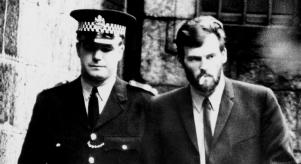
Missing at sea: the people who faked their own deaths
When Missing Turns to Murder delves into some of Britain’s most mysterious and unexpected murder cases. Blending insights from detectives, psychologists and the ordinary people whose lives were upended by the disappearance of their loved ones, it sheds a new light into how perplexing and poignant murder investigations were eventually solved.
One story covered in the show is that of Carole Packman, a wife and mother who vanished in Bournemouth back in 1985. ‘There was a piece of paper which had her wedding ring on,’ her then-teenage daughter Sam later recalled. ‘It just said that she’d had enough, that she’d decided to leave and wouldn’t be coming back.’
This wasn’t actually beyond the bounds of plausibility. The domestic environment had become fraught in recent months, ever since her husband Russell had brought in a young woman called Patricia as a lodger. They openly had an affair right there in the family residence, causing understandable stress and anxiety for Carole. The rising tension even caused teenage Sam and her mum to be at loggerheads, further isolating Carole in her own home.
Resigning herself to the fact her mother had apparently fled the suffocating environment and started a new life somewhere else, Sam got on with her life. But then came another strange twist, when in 1993 her father Russell went missing while on a yacht close to the coast of Guernsey.
A big rescue operation uncovered nothing, and Sam once again had to reconcile herself to the loss of a parent. But police became suspicious when someone called ‘Mr Russell’ booked a boat from Guernsey back to the mainland. It then transpired his partner Patricia had lodged a claim for a massive life insurance payout. By keeping tabs on her, detectives were led to Russell who was indeed alive and well.
Yet another shocking twist was to come, when – while banged up for fraud – Russell confessed to cellmates that he’d murdered Carole all those years before. Convicted of killing her, Russell joined an ever-increasing list of duplicitous people who brazenly tried to fake their own death at sea, only to come spectacularly unstuck.
John Darwin
Why is pretending to have drowned a popular method for ‘pseudocide’? It eliminates witnesses from the equation, for one thing. Take a boat out into the wide blue yonder, and you can easily set your plan into motion without anyone seeing. It also allows for your death to be formally declared without any lingering question marks over the absence of a corpse.This must have been the thinking of perhaps the most famous pseudocide of modern times: John Darwin, the ‘Canoe Man’, the one-time prison officer who vanished while out in the North Sea in 2002. A huge search found only the wreckage of his boat, and his wife Anne seemed appropriately grief-stricken.
Then, in 2007, he made the most spectacular comeback since Lazarus, walking into a police station and saying ‘I think I am a missing person’. As a lawyer involved in his eventual trial put it, ‘When John Darwin turned up ‘from the dead’ before Christmas last year it was seen at first as an amusing story for the festive season. But this was a callous and calculated fraud.’
Far from being an innocent man suffering from amnesia after a canoe accident, Darwin was a con artist who’d been motivated to fake his own death by a classic combination of greed and desperation. Facing mounting debts, he hatched a plan to have Anne collect insurance and pension payouts in the hundreds of thousands of pounds.
This is ultimately the problem with faking your own death: logistics...
With flabbergasting boldness, he carried on living in his home after his death, scurrying into a neighboring building whenever she had people come over. He got a new passport under a false identity, enjoyed an online romance with a woman in Kansas, and probably would have succeeded in relocating permanently to Panama with Anne if changing visa regulations hadn’t forced him to come back from the dead.
John Stonehouse
This is ultimately the problem with faking your own death: logistics, laws and media coverage can expose the truth or force you to show your hand. Take the curious case of John Stonehouse, an eminent Labour politician who in 1974 was driven to pseudocide by financial pressures. Knowing that he was investigated for fraud, he left a heap of clothes on a Miami beach, hoping people would assume he’d drowned in the sparkling Florida waters.
The ruse didn’t last very long. His attempts to transfer himself large amounts of money after his ‘demise’ caused suspicion among bank staff and he was eventually tracked down and apprehended in Australia. Remarkably, he would carry on being active in politics even after serving time in prison for fraud (and, years after his death, was outed as having been a spy for the Eastern Bloc during the Cold War).
Stonehouse is an example of fear, rather than greed, being the motivating factor. In his case, it was fear of the financial mess of his own making, and his desperation to hit the reset button and leave it all behind him. As one newspaper report at the time put it, ‘He admitted himself that he had got on to a money-go-round, and as it spun faster and faster and he fiddled and fiddled with larger and larger sums, he got some real relief by pretending to be plain ordinary Joe.’
Kim Gordon
The desire for escape is also the apparent motive of the most recent example of a faked death. Kim Gordon, a 54-year-old British man, was reported missing from a California beach in February of this year. According to his son, the street trader and busker had vanished while swimming, but authorities now believe it’s a cunning ploy to evade justice, as Gordon faces a string of rape charges back in the UK. Only time will tell if this will be yet another case of a desperate man mistaking the deep blue sea as a gateway to a new life.





